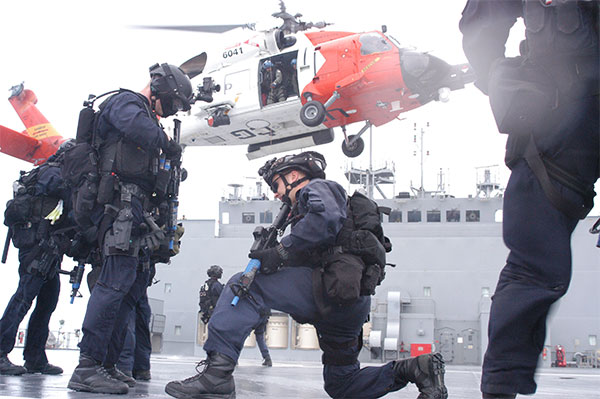US Coast Guard Explained

Introduction to the US Coast Guard

The United States Coast Guard (USCG) is a unique branch of the US military that operates under the Department of Homeland Security during peacetime and can be transferred to the Department of the Navy during wartime. The USCG is a multi-mission service, with responsibilities that include maritime law enforcement, search and rescue, maritime safety, marine environmental protection, and ports, waterways, and coastal security. With a rich history dating back to 1790, the USCG has evolved to meet the changing needs of the nation, playing a critical role in protecting the country’s coastlines, waterways, and interests.
Missions and Responsibilities

The USCG has a wide range of missions and responsibilities, which can be categorized into several key areas: * Maritime Law Enforcement: The USCG is responsible for enforcing federal laws and regulations in the maritime domain, including counter-narcotics, counter-terrorism, and immigration enforcement. * Search and Rescue: The USCG operates a comprehensive search and rescue program, providing assistance to people in distress at sea or on inland waterways. * Maritime Safety: The USCG works to prevent accidents and ensure the safety of mariners, passengers, and cargo through inspections, investigations, and enforcement of safety regulations. * Marine Environmental Protection: The USCG is responsible for protecting the marine environment from pollution and damage, including responding to oil spills and enforcing regulations to prevent pollution. * Ports, Waterways, and Coastal Security: The USCG works to prevent and respond to threats to the security of the nation’s ports, waterways, and coastlines, including counter-terrorism, maritime domain awareness, and cybersecurity.
Organization and Structure

The USCG is organized into several key components, including: * Headquarters: The USCG Headquarters is located in Washington, D.C. and serves as the central command and control center for the service. * Districts: The USCG is divided into several districts, each responsible for a specific geographic area and range of responsibilities. * Sectors: Sectors are the operational commands of the USCG, responsible for carrying out the service’s missions and responsibilities in a specific area. * Units: The USCG has a range of units, including cutters, boats, and aircraft, which are used to carry out the service’s missions and responsibilities.
Careers and Training

The USCG offers a range of career opportunities for enlisted personnel, officers, and civilians. To become a member of the USCG, individuals must meet certain eligibility requirements, including age, citizenship, and education requirements. Once enlisted or commissioned, members of the USCG undergo basic training and advanced training to prepare them for their roles and responsibilities. The USCG also offers a range of specialized training programs, including aviation, boatswain’s mate, and engineering.
Equipment and Assets

The USCG operates a range of equipment and assets, including: * Cutters: The USCG has a fleet of cutters, ranging from small patrol boats to large, high-endurance cutters. * Boats: The USCG operates a range of boats, including response boats, patrol boats, and utility boats. * Aircraft: The USCG operates a range of aircraft, including helicopters, planes, and unmanned aerial vehicles (UAVs). * Technology: The USCG uses a range of technologies, including communications systems, navigation systems, and surveillance systems, to support its missions and responsibilities.
| Asset | Description |
|---|---|
| Cutters | Range of vessels, from small patrol boats to large, high-endurance cutters |
| Boats | Range of boats, including response boats, patrol boats, and utility boats |
| Aircraft | Range of aircraft, including helicopters, planes, and unmanned aerial vehicles (UAVs) |
| Technology | Range of technologies, including communications systems, navigation systems, and surveillance systems |

📝 Note: The USCG is a unique branch of the US military, with a range of responsibilities and missions that are critical to the safety and security of the nation.
In summary, the USCG is a vital component of the US military, with a range of responsibilities and missions that are critical to the safety and security of the nation. From maritime law enforcement to search and rescue, the USCG plays a critical role in protecting the country’s coastlines, waterways, and interests. With its rich history, unique organization and structure, and range of equipment and assets, the USCG is an important part of the US military, working to keep the nation safe and secure.
What is the primary mission of the US Coast Guard?

+
The primary mission of the US Coast Guard is to protect the public, the environment, and the country’s economic and security interests in the maritime domain.
How does the US Coast Guard contribute to national security?

+
The US Coast Guard contributes to national security by providing maritime law enforcement, ports and waterways security, and maritime defense capabilities, as well as supporting other agencies and departments in their national security missions.
What kind of training does the US Coast Guard provide to its personnel?

+
The US Coast Guard provides a range of training to its personnel, including basic training, advanced training, and specialized training programs, to prepare them for their roles and responsibilities in the service.



